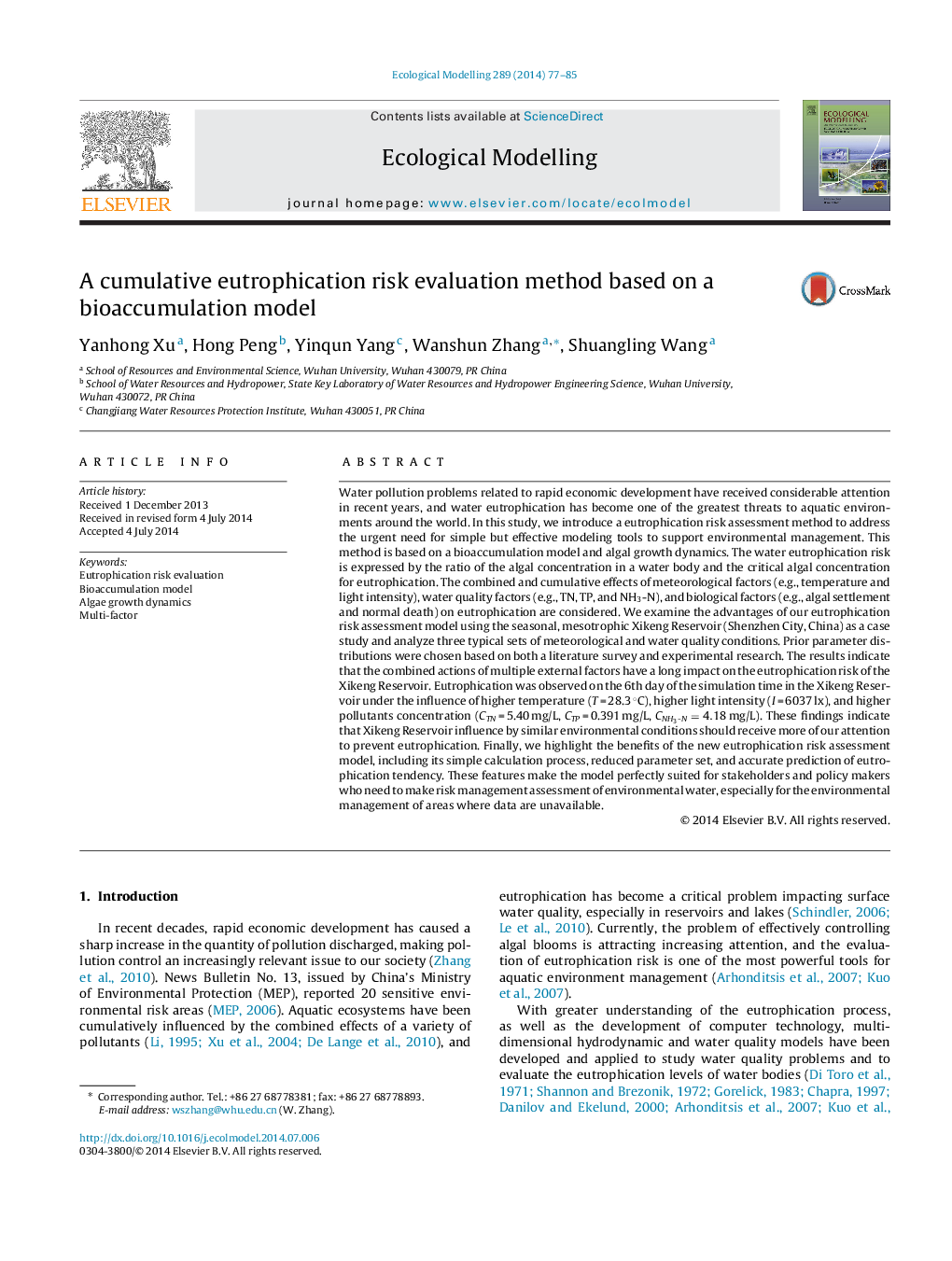| Article ID | Journal | Published Year | Pages | File Type |
|---|---|---|---|---|
| 6296820 | Ecological Modelling | 2014 | 9 Pages |
Abstract
Water pollution problems related to rapid economic development have received considerable attention in recent years, and water eutrophication has become one of the greatest threats to aquatic environments around the world. In this study, we introduce a eutrophication risk assessment method to address the urgent need for simple but effective modeling tools to support environmental management. This method is based on a bioaccumulation model and algal growth dynamics. The water eutrophication risk is expressed by the ratio of the algal concentration in a water body and the critical algal concentration for eutrophication. The combined and cumulative effects of meteorological factors (e.g., temperature and light intensity), water quality factors (e.g., TN, TP, and NH3-N), and biological factors (e.g., algal settlement and normal death) on eutrophication are considered. We examine the advantages of our eutrophication risk assessment model using the seasonal, mesotrophic Xikeng Reservoir (Shenzhen City, China) as a case study and analyze three typical sets of meteorological and water quality conditions. Prior parameter distributions were chosen based on both a literature survey and experimental research. The results indicate that the combined actions of multiple external factors have a long impact on the eutrophication risk of the Xikeng Reservoir. Eutrophication was observed on the 6th day of the simulation time in the Xikeng Reservoir under the influence of higher temperature (T = 28.3 °C), higher light intensity (I = 6037 lx), and higher pollutants concentration (CTN = 5.40 mg/L, CTP = 0.391 mg/L, CNH3-N=4.18mg/L). These findings indicate that Xikeng Reservoir influence by similar environmental conditions should receive more of our attention to prevent eutrophication. Finally, we highlight the benefits of the new eutrophication risk assessment model, including its simple calculation process, reduced parameter set, and accurate prediction of eutrophication tendency. These features make the model perfectly suited for stakeholders and policy makers who need to make risk management assessment of environmental water, especially for the environmental management of areas where data are unavailable.
Keywords
Related Topics
Life Sciences
Agricultural and Biological Sciences
Ecology, Evolution, Behavior and Systematics
Authors
Yanhong Xu, Hong Peng, Yinqun Yang, Wanshun Zhang, Shuangling Wang,
